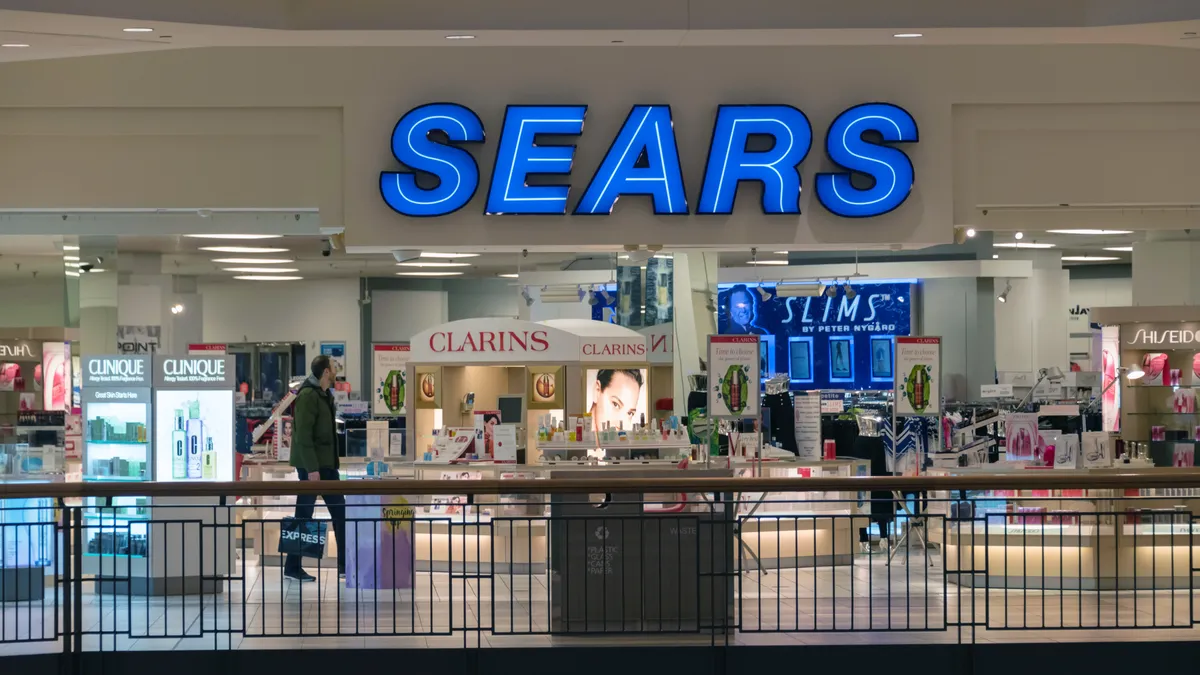Dive Brief:
- Sears Holdings on Tuesday lashed out at The Wall Street Journal over a more than 2,000-word story detailing the decline of the retailer and how it's "scrambling" to maintain vendors. In a company blog post, the retailer called out the Journal and described the story as "yet another rehash of inaccurate assertions and negative speculation about Sears Holdings and its future." Company spokesman Howard Riefs told Retail Dive that Sears had no further comment.
- The Journal story offers a historical account of the company's sales declines and financial struggles, and makes note of suppliers who have pulled back from Sears or have tightened financial terms. That includes Whirlpool, which the Journal writes wanted to reduce its shipments to Sears and raise its prices for the retailer. Negotiations ultimately failed and the retailer and appliance maker ended their relationship in October. Sears said in the blog post that "we were unable to reach an agreement that would have allowed us to offer Whirlpool products to our members at a reasonable price" and that it still carries other major appliance brands.
- In other Sears news, the retailer saw its credit downgraded deeper into distressed territory by S&P late last week, according to a report emailed to Retail Dive. Credit analysts at S&P cited Sears' cash burn and the more than $1 billion in debt maturities due next year that could force the company to restructure. The analysts wrote that "compared to peers, ongoing operating performance has been poor," though they also noted Sears' plans to reduce corporate costs and its "record of accomplishment for asset sales and incremental financings."
Dive Insight:
This isn't the first time this year that Sears officials have attacked the media over negative reporting. CEO Eddie Lampert in May blasted coverage of the retailer as "deliberately unfair" and "meant to scare our vendors."
To be sure, individual media outlets have little to no incentive to purposefully "scare" the vendors of a particular retailer. While the negative coverage around Sears might well cast a pall over its relationships with stockholders and vendors, both groups are typically sophisticated stakeholders, well-attuned to the metrics behind businesses.
Looking at the numbers, the story of Sears' decline is pretty straightforward. As the company has closed unprofitable stores and spun off business lines, the retailer's store footprint has well more than halved since 2010, falling around 4,000 stores to 1,250 currently, with plans to close more. From 2010 to 2016, its sales have fallen by nearly half, from $43.3 billion to $22.1 billion last year. As the Journal notes, the company has lost $10.4 billion since 2011.
Moreover, Sears had just one quarter of positive same-store sales growth between 2008 and the first quarter of 2017, according data from retail research firm Retail Metrics emailed to Retail Dive. During that same period, Sears' operating income was negative in all but eight of 37 quarters.
The dismal performance — by several measures, Sears is a laggard in a lagging sector — combined with the company's debt has put it on several analyst watch lists. The company is top among retailers on Fitch's loans of concern list for a $1.6 billion outstanding loan.
Fitch's David Silverman, senior director for retail coverage at the ratings agency, told Retail Dive this summer that his team sees risk that Sears could default in the next year or two despite several restructuring moves in 2017. "The company continues to need $2 billion in liquidity every year to fund EBIDTA losses, basic maintenance, capex, pension payments, debt payments and other fixed obligations," he said. "While some of the moves they have made this year should be able to help the company operate in 2017, in our analysis, they have not changed the company's long-term picture."
Sears has been able to stave off default for years largely through store closures (there have been hundreds this year alone), staff layoffs (numbering in the hundreds this year), asset sales and loans from Lampert's hedge fund ESL Investments, which has provided hundreds of millions of dollars in credit in 2017. To try to revive sales, it's also partnered with Amazon to sell Kenmore products, tested new store formats and revived its holiday catalog.
While Sears has slowed some of the financial bleeding, few see a major retail turnaround ahead. As Ken Perkins, president of Retail Metrics, told Retail Dive earlier this year: "Given how competitive the entire retail landscape is, where you have a company like Macy's, which is much better positioned just in terms of national brand, product offerings, cleanliness of stores, investments in IT and ecommerce efforts — all things Sears hasn't done — and even they are having a tough go of it and shuttering 100 stores. There's really just no light at the end of the tunnel [for Sears]. It's only a matter of time before the lights go out."
Things don't look good for Sears. "There really isn't a way forward," he added. "I don't see how it can possibly survive long-term."















